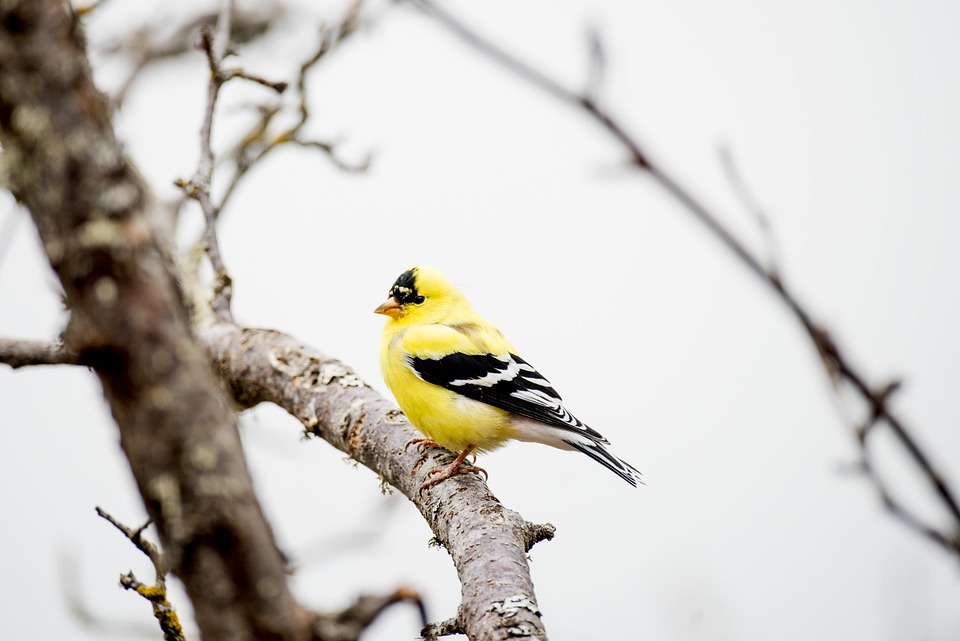The Finch is a perching songbird that belongs to the Fringillidae family. It is a delightful pet that has fairly easy requirements, making it an ideal pet for owners who have limited time to spend with them. Finches come in a variety of colors and personalities, and they do not like living in solitude. Keeping one with a pair is highly recommended. If you are willing to fulfill its care requirements, make sure to read further!
History
The Finch is a type of songbird, and all finches are divided in 4 subfamilies that house more than 40 genera. Finches are abundant across the world. Some of the most famous Finches are Atlantic Canaries, Vampire Ground Finches, and ‘Akohekohes or Crested Honeycreepers. They take refuge in a variety of habitats such as tropical rainforests, mountains, evergreen forests, arid deserts, and some were even present in Arctic regions. They can be found in north, central, and south America, as well as Africa and Eurasia. No Finch species are present in Antarctica and Australia.
Characteristics of a Finch
Average size: 4 to 10 inches
Average weight: 3 oz.
Finches are small to medium-sized birds with compact body build. Male and female Finches come in greenish or brownish body covered with yellow, red, and black feathers. Male Finches come in more vivid colors and larger bodies than females. A Finch’s beak has a conical shape. Resembling the letter V. The beak’s shape comes useful when cracking seeds. The size of the beak varies according to the size of the Finch species. A Finch’s pair of ears are situated slightly below and behind the eyes. Since its ears are covered in feathers, they are not visible. The nostrils are situated on the sides of its upper bill, but like most birds, Finches have a poor sense of smell, hence they rely on their sight when foraging for food and sensing danger.
Finches are great pets for hobbyists who love birds with soothing sounds. Despite their relatively soft calls, Finches are highly sociable, so it’s best to keep a pair instead of a lone bird. Just like most birds, Finches love keeping themselves clean, therefore you must provide them with a large, shallow water basin filled with clean water.
Caring for a Finch
When buying Finches, it’s best to buy from a professional breeder. Look for signs of illnesses, including swollen eyes, abnormal growths on the body, puffed-out feathers, bald patches, limited movement, lying on the cage floor, and abnormal droppings on the cage. Ask the breeder for the history and recent illnesses of relatives.
Finches require ample amount of room to fly horizontally. Therefore, you need to buy a cage that has a minimum of 30 inches lengthwise. Locate the cage in a quiet area—away from foot traffic noise to minimize stress. Provide a substrate for the cage: a simple newspaper or craft paper would suffice. Clean and disinfect the cage monthly or as often as necessary.
Unlike other pet birds, Finches are not big fans of toys. However, they appreciate items to perch and swing onto. You can place a variety of perch sizes to lower the risk of arthritis. Avoid these perches from blocking their flight routes. Also, remember to keep decorations away from food and water sources to avoid contamination. When choosing cage decorations, ensure that the items are free from zinc, lead, and other toxic metals. Food and water containers should be non-toxic plastic or stainless steel.
Finches need sunlight to stay on top of their health. When the cage is situated near a window where direct sunlight is passing through, make sure a shady spot is available for them. As such, in order to stay healthy, they require a balanced diet. Finches are fed with specialized pellets, fresh fruits and vegetables, and boiled eggs with shells. Cuttlebones are occasionally provided to help maintain the strength of their beaks. Fresh food items should be provided during the beginning or end of the day to mimic their natural foraging habits in the wild. If your pets refuse to eat after a few hours, make sure to discard the food items to minimize bacteria growth. Occasionally, you can provide your pet birds with mealworms and crickets to increase their protein intake.

